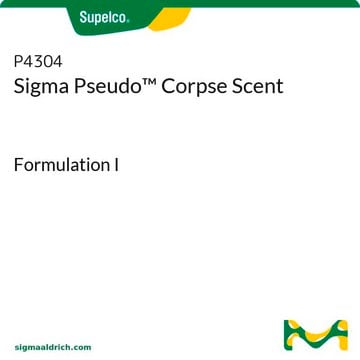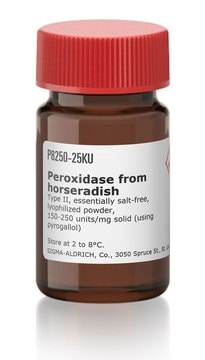Leucocrystal violet is the completely reduced form of crystal violet. The dye powder appears white to gray to lavender, and solutions are expected to be colorless. In addition to identifying lactobacilli in cheese, Leucocrystal Violet (LCV) is a cationic triarylmethane dye that has an affinity for both cellulosic and proteinaceous materials. It reacts with the hemoglobin in blood and turns the blood impression to a purple/violet color. Consequently, the dye is widely used to stain blood residue on both porous and non-porous materials. There is also mention of Leucocrystal Violet being used as an indicator on a urinalysis test strip, potentially to detect the presence of blood or protein. However, the quality level for Leucocrystal Violet is 200 on a scale of 100 to 600, and it is only advertised as suitable for Research Use Only. Urinalysis test strips sold for human use are classified as medical devices and are stated to be suitable for In Vitro Diagnostic Use. As such, product 219215 is not suitability tested to ensure the dye is suitble for use in the manufacture of urinalysis test strips.
219215
Leucocrystal Violet
Sinónimos:
4,4′,4′′-Methylidynetris(N,N-dimethylaniline), Leuco Crystal Violet
Seleccione un Tamaño
Seleccione un Tamaño
About This Item
Productos recomendados
Formulario
powder
Nivel de calidad
técnicas
microbe id | staining: suitable
mp
175-177 °C (lit.)
λmáx.
260 nm
ε (coeficiente de extinción)
≥700 at 257-263 nm
aplicaciones
diagnostic assay manufacturing
hematology
histology
temp. de almacenamiento
room temp
cadena SMILES
CN(C)c1ccc(cc1)C(c2ccc(cc2)N(C)C)c3ccc(cc3)N(C)C
InChI
1S/C25H31N3/c1-26(2)22-13-7-19(8-14-22)25(20-9-15-23(16-10-20)27(3)4)21-11-17-24(18-12-21)28(5)6/h7-18,25H,1-6H3
Clave InChI
OAZWDJGLIYNYMU-UHFFFAOYSA-N
Categorías relacionadas
Aplicación
Acciones bioquímicas o fisiológicas
Precaución
Producto relacionado
Palabra de señalización
Warning
Frases de peligro
Consejos de prudencia
Clasificaciones de peligro
Aquatic Acute 1 - Aquatic Chronic 1
Código de clase de almacenamiento
11 - Combustible Solids
Clase de riesgo para el agua (WGK)
WGK 3
Punto de inflamabilidad (°F)
Not applicable
Punto de inflamabilidad (°C)
Not applicable
Equipo de protección personal
dust mask type N95 (US), Eyeshields, Gloves
Elija entre una de las versiones más recientes:
Certificados de análisis (COA)
¿No ve la versión correcta?
Si necesita una versión concreta, puede buscar un certificado específico por el número de lote.
¿Ya tiene este producto?
Encuentre la documentación para los productos que ha comprado recientemente en la Biblioteca de documentos.
Los clientes también vieron
-
Is 219215-5G the same powder that is used in the urinalysis dip sticks?
1 answer-
Helpful?
-
-
What is the purity of lot/batch #:MKBW1177V
1 answer-
The purity is not determined for this product, only carbon and nitrogen are quantitated.
Helpful?
-
Active Filters
Nuestro equipo de científicos tiene experiencia en todas las áreas de investigación: Ciencias de la vida, Ciencia de los materiales, Síntesis química, Cromatografía, Analítica y muchas otras.
Póngase en contacto con el Servicio técnico











